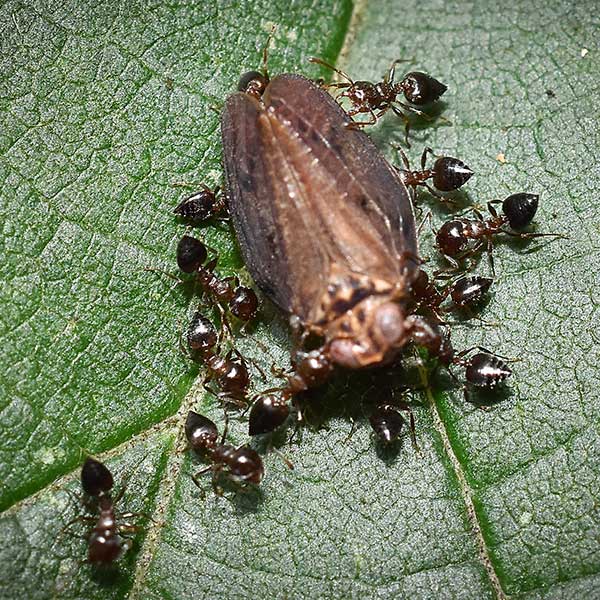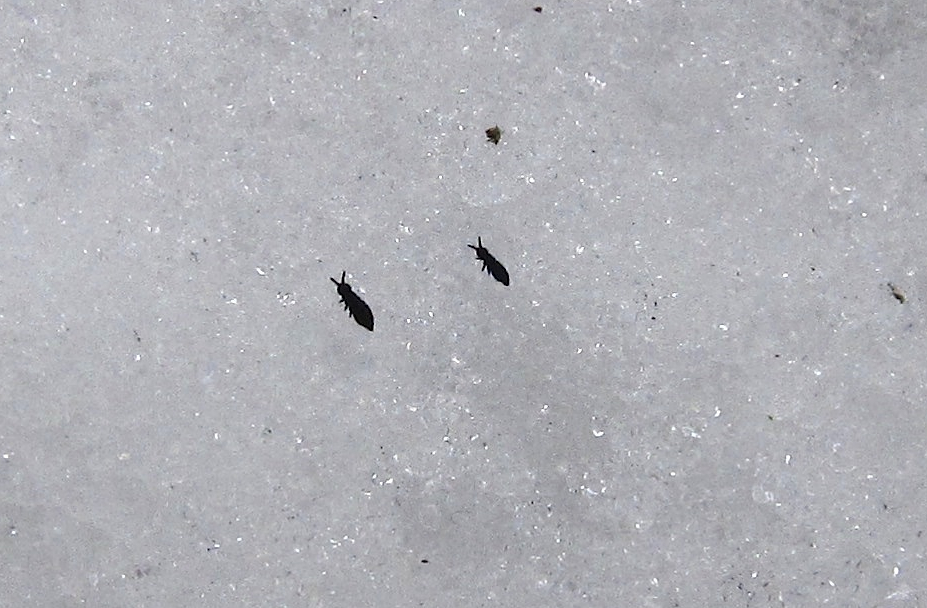

Indoors, these insects are merely nuisance pests. Springtails indoors are most commonly found in and around sinks, wash basins, and bathtubs, or very small cracks and crevices in the kitchen and bathroom. Often they build up tremendous numbers and become a nuisance pest on African violets, potted plants, and in A few species have been known to cause damage in mushroom cellars. Upon occasions springtails may become so abundant that they may feed on roots and cause damage to germinating seeds and tender shoots of seedlings in greenhouses and gardens. Their food generally consists of decaying vegetable matter, algae, lichens, pollen, and fungal spores.

Some species are found on the surface of water, on vegetation, in caves and on patches of snow (so-called snowfleas). Springtails prefer cool, dark, moist habitats of soil, leaf mold, fungi, moss, decaying wood and sometimes ant and termite nests. Springtails are among the most primitive of insects. With this spring or furcula, individuals have the ability to propel themselves several inches into the air. Springtails get their name from a small spring-like organ attached to the end of the body. This type of development means there is little difference between the immature and adult forms except size. They are wingless, have chewing mouthparts, and undergo an ametabolous type of development. They vary in color from white, gray, yellow, orange, gold, metallic green, lavender, red or some other color some are even patterned or mottled. Springtails are either elongate or globular in shape, under 0.2 inch in length. In the United States there are about 650 species, divided into 7 families. Springtails are found throughout the world from the Arctic to the Antarctic regions. Feeding is mostly non- destructive but at times large numbers may invade greenhouses, swimming pools, or houses to become a nuisance. Springtails are generally considered harmless. A cubic meter of soil may contain up to 100,000 springtails. Most of them live in the soil or in other concealed situations. Because of their small size and micro- habitat, they are seldom observed.

Springtails are small, abundant, wingless insects of the order Collembola that live in a variety of moist habitats. Jay B Karren, Extension Entomologist Revised September 2001 Alan H. I could be wrong but that is what it seems like here is an article says there is 650 species of them.įact Sheet No. The white thing coming of its ass looks to be the tail like a dozen other photo's I see of them. From looking at some pictures and articles on google it seems like there is different springtails some look like the tiny white ones and other look like what you have there.


 0 kommentar(er)
0 kommentar(er)
